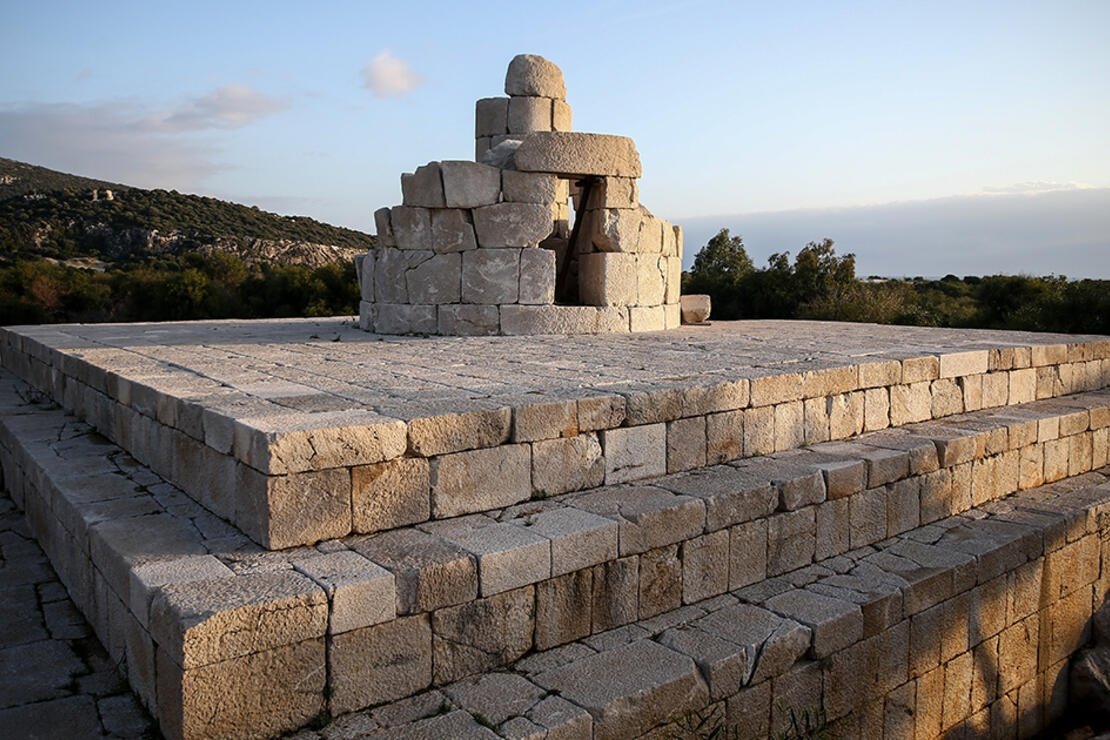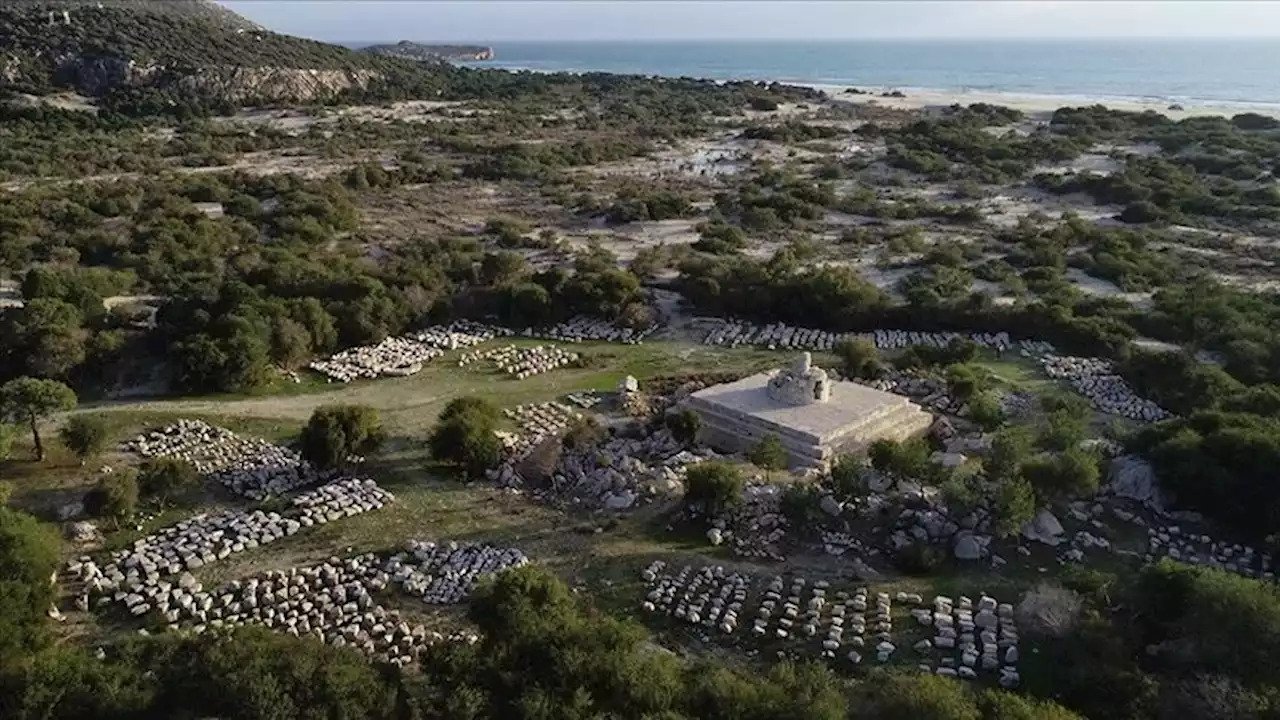The ancient Patara Lighthouse, constructed on the order of one of the most famed emperors in Roman history, Nero, in 64 A.D., is set to be restored and once again shine on the shores of Kaş, in southern Antalya, centuries after it went dark.
Professor Havva İşkan Işık from the Department of Archaeology at Akdeniz University said the lighthouse will be reconstructed with its original stones.
“The lighthouse is the most fascinating artwork in the Patara area,” she said.
The ancient 30-meter-high lighthouse has the potential to become one of the most important cultural heritage sites in the country, Işık added.
“God willing, after restoration, the lights of Patara’s Lighthouse will shine a way for sailors in the future,” she said.
Işık noted that even though the lighthouse is not the oldest of its kind in the world, it still has historical importance for Turkey, including playing an important role in the history of the Roman Empire.
“The Lighthouse of Nero has a huge potential to attract a great number of tourists,” she said. “The government has declared 2020 as the year of Patara. I thank the president for making this possible.”
Işık said the lighthouse had a golden inscription carved into its walls reading: “I am Emperor Nero. I built this lighthouse to greet sailors.”

The lighthouse was introduced to the world by William Gell, who carried out research visits on behalf of the Society of Dilettanti – an association examining ancient Greek and Roman arts – between 1812 and 1813, while the term lighthouse was first used by Turkish professor Fahri Işık who inaugurated the excavations in 1988.
The second excavations to unearth the original stones used in the construction began in August 2004.
The lighthouse consists of two main sections – a podium and a tower – while the tower consists of two interlocking cylindrical structures connected by a spiral-shaped ladder. The wall thickness is 1.2 meters (4 feet). The tower will reach a height of about 26 meters (85 feet) on the podium after it is rebuilt.
Patara was one of Lycia’s major naval and trading ports, located at the mouth of the Xanthos River. Patara’s oracle at the renowned Temple of Apollo, which has not been discovered yet, was said to rival that of Delphi, and the temple equaled the reputation of the famous temple on the island of Delos. It was believed that Apollo lived on Delos during summer but spent the winters in Patara. The ancient city is also known as the birthplace of St. Nicholas, a.k.a. Santa Claus. St. Nicholas was a Christian bishop famed for helping the needy.
The city surrendered to Alexander the Great in 333 B.C. During the Hellenistic Period, the Lycian Council Building was built. It is regarded as a symbol of democracy in Lycia and a sign of its ancient glory.
Roman general Brutus captured Patara in 42 B.C. The Lycian settlement was then annexed by Emperor Claudius and turned into a magnificent Roman site with mesmerizing beaches along the Mediterranean Sea. The city later came under Byzantine and Ottoman control.
Last Updated on Feb 25, 2020 3:15 pm










Discussion about this post